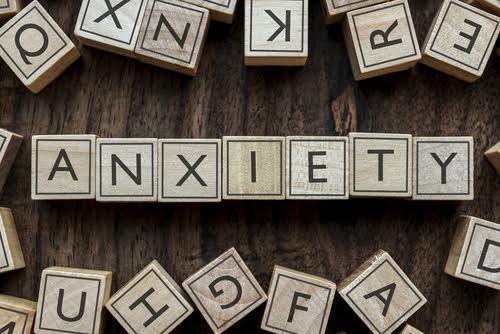Anxiety disorders are among the most common mental health issues on the planet. An estimated 18 percent of the world population struggles with anxiety symptoms, and among adolescents in the US, it’s estimated that about a quarter are diagnosed with an anxiety disorder.
Anxiety is much more than just worry. It’s a gnawing and overarching set of symptoms that eats its way into every thought, leaving many teens consistently thinking up worst-case scenarios, struggling with sleep and concentration, and feeling mentally and physically exhausted.
However, anxiety is not untreatable. While common, there are many ways you can help teenagers with anxiety.
Types of Anxiety Disorders in Teens
Anxiety disorders come in different shapes and sizes. The most common diagnosis is a generalized anxiety disorder, a condition characterized by overarching worry and panic.
Teens with a generalized anxiety disorder will expect the worst, maybe worried about things they have no reason to worry about.
Social anxiety disorder is another common form of anxiety among teens. In this case, their symptoms revolve around fears and worries of public perception, being talked and gossiped about, struggling to make friends, not being able to open up to others, shutting down around strangers, and panicking at the idea of being in an unfamiliar group, or in the center of attention.
Phobias are another common type of anxiety. Whereas generalized anxiety and social anxiety cover broad feelings of fear and worry, phobias are an intense and overwhelming fear towards one thing, be it an animal, a scenario, or a concept.
Coming face to face with triggers may cause a panic attack, a combination of physical and mental symptoms such as nausea, difficulty breathing, sweating, heart palpitations, inability to concentrate, and numbness.
Post-traumatic stress disorder is also a type of anxiety disorder or stress disorder. In cases of PTSD, a specific traumatic event or series of chronic stressors creates a mental wound of sorts.
PTSD occurs most often as a result of violence, particularly sexual assault, but is also common among people who experienced the horrors of war, including soldiers and refugees. PTSD is characterized by changes in the brain that include an increased sensitivity or hypervigilance, and mental consequences of trauma, such as re-experiencing the fear and dread of their trauma, developing extreme measures to avoid any memories of it, or dissociating completely from it.
Other anxiety disorders include panic disorders, which are characterized by frequent and unprovoked panic attacks, and obsessive-compulsive disorder, which couples an intrusive, irrational, and discomforting thought (the obsession) with a tic or behavior that provides a very short-term feeling of relief (the compulsion).
Among all these conditions, the overarching similarities and combined characteristics of an anxiety disorder are intrusive fear and irrational worry. Teens who struggle with some form of anxiety typically won’t respond well to attempts to explain their worries away, or worse yet, being told to “stop worrying”. Their thoughts feel uncontrollable and recurring.
Dealing with Anxiety at Home
Teens with anxiety are more sensitive to external stressors, and their symptoms become worse with compounding pressure. This can come from home (a troubled marriage, frequent fights, poor relationship with parents, bullying siblings), from school (pressure to perform, bullying at school), or elsewhere (worrying about the future, medical problems, poverty, depression).
Identifying and relieving some of these stressors is one way to help fight back against anxiety. Work with your family to create a better environment for your teen. Help them create a sanctuary for themselves at home.
This can be especially difficult if your teen has overbearing or aggressive siblings. They might feel isolated and lonely due to how they’re treated by others, which can worsen their symptoms.
Talking to your teen about their specific worries and fears also helps, even if it doesn’t always make them go away. Having someone to explain things to, and go over each worry together, can help make them feel not quite so threatening. While teens with anxiety may require more reassurance than other teens, it can help them in the short term.
If anxiety runs in the family, then retelling your own experiences as a teen struggling with worries and feelings of inadequacy or panic may help your teen understand that they aren’t alone. That in itself can be a huge deal. Teens with anxiety issues are generally aware that their own thoughts and worries are holding them back, and it can be yet another source of loneliness and frustration. Knowing these are things many people fight with on a daily basis, with success, can give them hope and comfort.
Finally, it’s also important to discuss the option of seeking professional help.
When to Get Help
Feelings of fear and anxiety are normal responses to stress, and it’s no wonder that teens and adults alike are experiencing more anxiety as a result of the pandemic, alongside other societal and global issues.
But once these feelings are elevated to the point that they consistently impede and hinder your teen on a daily basis, and present themselves alongside physical symptoms, even without triggers, then your teen might be struggling with more than just a healthy response to stress.
Does Medication Work?
There are many different medications for anxiety, and it’s rare that a doctor will prescribe them without concurrent talk therapy and behavioral treatment. Treating anxiety, both in the short-term and the long-term, is often more about finding healthier ways to cope with these thoughts.
Certain forms of anxiety – such as OCD and PTSD – require very specific therapies to overcome certain behavior and intrusive thoughts. When medication is prescribed, it can take the form of beta-blockers, anticonvulsants, antidepressants, and more.
How to Help Teenagers with Anxiety in the Long-Term
For many teens, an anxiety disorder or certain symptoms of anxiety are more than just the result of temporary environmental factors and may become a lifelong issue.
It’s in these cases that life-long protective factors, family support, and therapeutic habits become the backbone of treatment. Teens with anxiety will learn to cope with their condition in ways that best suit them.






